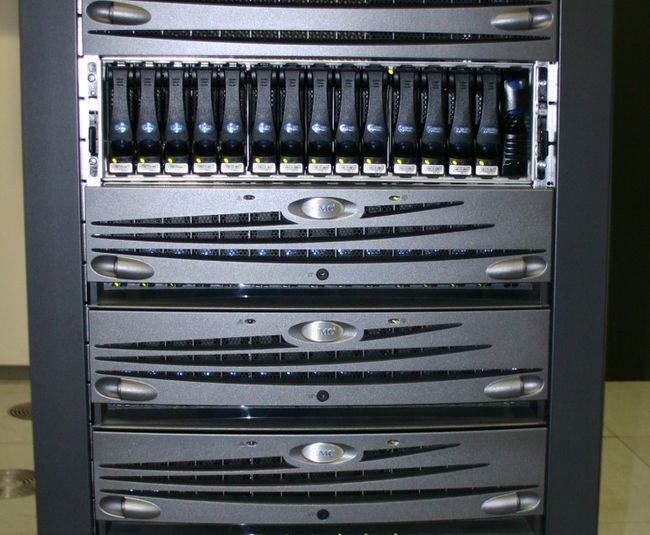Veeam Availability Suite v9: EMC Storage Integration
Veeam Backup & Replication v8 currently supports hardware snapshots on HP and NetApp storage. Recently, we are often asked, “and with what other storage will Veeam products integrate?” This article will discuss the integration of a future version of Veeam Availability Suite v9 , which will be released this year, with EMC data storage systems.
Support will include just two lines of EMC disk arrays and numerous options for their configuration. Both EMC VNX and VNXe systems are supported. Recovery will be available using Veeam Explorer for Storage Snapshots, which is included in all editions of Veeam Backup & Replication, including the Free Edition ) and backup using hardware snapshots.

Thanks to the use of hardware snapshots of the storage, you can ensure high availability of data in modern data centers, as the speed of the backup software can increase significantly if it uses hardware snapshots. Storage developers know better than anyone else how to build their disks at a low level, so it’s obvious that they can take snapshots of such disks with the maximum level of efficiency and performance.
')
Let's take a closer look at how everything works: Veeam Backup & Replication can view hardware snapshots of VNX and VNXe. Snapshots can be created either on a schedule on an array or through the Veeam Backup & Replication interface. Immediately after receiving the snapshot, you can view its contents and use effective recovery options.

Using hardware snapshots provides minimal RPOs. However, in the event of a hardware disk failure, snapshots are likely to "die" along with the data, so it is reasonable to make a backup of the snapshots data and store it elsewhere relative to the original data. Veeam Backup has a special option for this purpose: “Backup from Storage Snapshots”.
Thanks to the use of hardware snapshots, you can create backup copies at any time, even on the most loaded virtual machines. Before performing a backup, a virtual machine must be prepared for this by creating snapshots at the virtual machine level using VMware hypervisor (this operation ensures that all data buffers stored in memory are flushed to disk, thereby ensuring the integrity of application data in the backup). After that, the hardware snapshot is created, and the VMware snapshot is deleted. Further more interesting. Veeam Backup Proxy transfers data directly from the hardware snapshot. You no longer need to manually register a VM or initialize an ESXi datastore. Thanks to our patented technology, the VMware CBT option is available - which means that incremental copies can be created very quickly. At the end of the backup, the hardware snapshot is automatically deleted. The figure below shows the backup steps using hardware snapshots.

Veeam Availability Suite v9 will be released this year. Beta and preview versions will most likely be available, so you will be among the first to appreciate the interesting features of the new version. On the links below you can find additional information:
Support will include just two lines of EMC disk arrays and numerous options for their configuration. Both EMC VNX and VNXe systems are supported. Recovery will be available using Veeam Explorer for Storage Snapshots, which is included in all editions of Veeam Backup & Replication, including the Free Edition ) and backup using hardware snapshots.

Thanks to the use of hardware snapshots of the storage, you can ensure high availability of data in modern data centers, as the speed of the backup software can increase significantly if it uses hardware snapshots. Storage developers know better than anyone else how to build their disks at a low level, so it’s obvious that they can take snapshots of such disks with the maximum level of efficiency and performance.
')
Let's take a closer look at how everything works: Veeam Backup & Replication can view hardware snapshots of VNX and VNXe. Snapshots can be created either on a schedule on an array or through the Veeam Backup & Replication interface. Immediately after receiving the snapshot, you can view its contents and use effective recovery options.

Using hardware snapshots provides minimal RPOs. However, in the event of a hardware disk failure, snapshots are likely to "die" along with the data, so it is reasonable to make a backup of the snapshots data and store it elsewhere relative to the original data. Veeam Backup has a special option for this purpose: “Backup from Storage Snapshots”.
Thanks to the use of hardware snapshots, you can create backup copies at any time, even on the most loaded virtual machines. Before performing a backup, a virtual machine must be prepared for this by creating snapshots at the virtual machine level using VMware hypervisor (this operation ensures that all data buffers stored in memory are flushed to disk, thereby ensuring the integrity of application data in the backup). After that, the hardware snapshot is created, and the VMware snapshot is deleted. Further more interesting. Veeam Backup Proxy transfers data directly from the hardware snapshot. You no longer need to manually register a VM or initialize an ESXi datastore. Thanks to our patented technology, the VMware CBT option is available - which means that incremental copies can be created very quickly. At the end of the backup, the hardware snapshot is automatically deleted. The figure below shows the backup steps using hardware snapshots.

Veeam Availability Suite v9 will be released this year. Beta and preview versions will most likely be available, so you will be among the first to appreciate the interesting features of the new version. On the links below you can find additional information:
- Veeam Availability Suite v9 page
- Webinar recording of the integration of Veeam with EMC arrays (English)
- More information about backups using hardware snapshots [for arrays supported in v8]
- Learn more about the Veeam Explorer tool for storage hardware snapshots [for arrays supported in v8]
- Disk Snapshot Technology
Source: https://habr.com/ru/post/261567/
All Articles